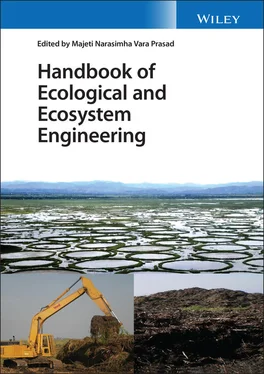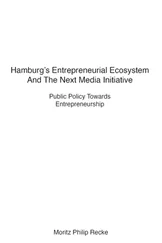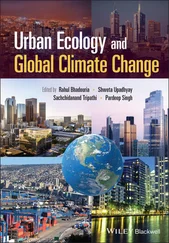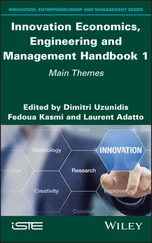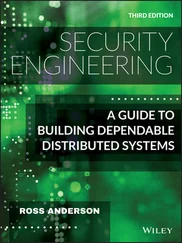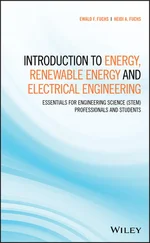Fábio Carvalho NunesAcademic Department, Federal Institute Baiano (IFBAIANO), Santa Inês, Bahia, Brazil
Rashmi PaliwalInstitute of Environmental Studies, Kurukshetra University, Kurukshetra, Haryana, India
Sara Pelaez SanchezDepartment of Biological Science, Faculty of Science & Engineering, Bernal Institute, University of Limerick, Limerick, Ireland
Marcin PietrzykowskiDepartment of Forest Ecology and Silviculture, Faculty of Forestry, University of Agriculture in Krakow, Krakow, Poland
Majeti Narasimha Vara PrasadSchool of Life Sciences, University of Hyderabad, Hyderabad, Telangana, India
Richa RaiPlant Ecology and Climate Change Science Division, CSIR National Botanical Research Institute, Lucknow, Uttar Pradesh, India
Sanchayita RajkhowaDepartment of Chemistry, Jorhat Institute of Science & Technology (JIST), Jorhat, Assam, India
Purabi SaikiaDepartment of Environmental Sciences, Central University of Jharkhand, Ranchi, Jharkhand, India
Jyotirmoy SarmaDepartment of Chemistry, Kaziranga University, Jorhat, Assam, India
Olaf SchmidtSchool of Agriculture and Food Science, University College Dublin, Dublin, Ireland
Petra SchneiderMagdeburg‐Stendal University of Applied Sciences, Magdeburg, Germany
L.R. SendanayakePostgraduate Institute of Science, University of Peradeniya, Peradeniya, Sri Lanka
Fernando G. da Silva AraújoMaterials Engineering Department, Federal University of Ouro Preto, Ouro Preto, Minas Gerais, Brazil
Anand Narain SinghSoil Ecosystems and Restoration Ecology Lab, Department of Botany, Panjab University, Chandigarh, India
Gagan Preet Singh SidhuCentre for Applied Biology in Environment Sciences, Kurukshetra University, Kurukshetra, Haryana, India
José Rodrigues de Souza FilhoAcademic Department, Federal Institute Baiano (IFBAIANO), Catu, Bahia, Brazil
Jorge A.S. TenórioPolytechnic School of University of São Paulo, Chemical Engineering Department, São Paulo, Brazil
Niteshwori ThongamDepartment of Forestry and Environmental Science, Manipur University, Imphal, Manipur, India
R.P. WanigatungeDepartment of Plant and Molecular Biology, Faculty of Science, University of Kelaniya, Kelaniya, Sri Lanka
Shailendra YadavDirector's Research Cell, National Environmental Engineering Research Institute, (CSIR: NEERI), Nagpur, Maharashtra, India
There is a growing global concern about environment and sustainable development. The 2030 Agenda for Sustainable Development was launched in 2015 to end poverty and set the world on a path of peace, prosperity and opportunity for all on a healthy planet (UN Sustainable development goals 2015). The 17 Sustainable Development Goals (SDGs) demand nothing short of a transformation of the financial, economic and political systems that govern our societies today to guarantee the human rights of all. They require immense political will and ambitious action by all stakeholders. Global efforts to date have been insufficient to deliver the desired to current and future generations. Due to COVID‐19, globally visible and an unprecedented health emergency, economic and social crisis, threatening lives and livelihoods jeopardizing the SDG’s Agenda’s promise to the current and future generations.
In this regard an integrated approach of management and restoration of ecosystems is a clear global concern. With increasing population explosion and exploitation of natural capital pressure on the planet earth is steeply increasing. In the last half century, the world human population has doubled, the consumption of natural resources has been multiplied by six, biodiversity has drastically decreased and the degradation of many ecosystems and global environmental modifications are glaring.
Odum H.T., used the term “ecological engineering” in 1960s, in several publications. Mitsch and Jørgensen highlighted the necessity of ecological engineering in 1989.
Ecology and Ecosystems study is the only scientific field capable of providing the scientific bases necessary to implement ecosystem manipulations e.g. to mitigate the effect of global climatic changes. Such ecosystem manipulations could potentially have very negative impacts if not well designed.
Conversely, modern scientific ecology needs concrete examples of applied management Practitioners, stakeholders, and policy makers for ecosystem engineering are indeed good forcing processes to encompass the range of the studied ecological variables in terms of heterogeneity, limits and the occurring interactions between these variables.
In the same vein, the full development of ecological engineering requires stakeholders, scientists from engineering sciences, socio‐economical sciences, and all environmental sciences to work together both to build a common general framework and to ground their work on concrete common projects.
Ecological engineering is also particularly relevant for developing countries. Indeed, the need for sustainable exploitation of ecosystems is very high in these countries where populations are still quickly growing and where individuals and institutions have often difficulties to develop practices based on high input rates (energy, water, mineral nutrients).
In this context this book assumes considerable significance. Thus, this book aimed at integrating multiple ecosystem services of the “Earth Ecosystem” resources (biotic and abiotic) keeping in view the UN 17 Sustainable Development Goals. Phytobiomeand microbiomeservices that humans derive are focussed. Essentially Ecological and Ecosystem Engineering principles of the global ecosystem (Earth) for sustainable development will be dealt in this work
Goals of Ecological Engineering are
1 the restoration of ecosystems that have been substantially disturbed by human activities such as environmental pollution or land disturbance
2 the development of new sustainable ecosystems that have both human and ecosystems, and ecological value.
3 Ecological restoration ‐ the return of an ecosystem to a close approximation of its condition prior to disturbance
Terms that are synonyms, subdisciplines, or fields similar to the crux of this books are: Bioengineering, biomanipulation, biospherics, ecohydrology, ecological engineering ecosystem rehabilitation, ecotechnology, engineering ecology, habitat reconstruction, nature cure, nature engineering, reclamation ecology, restoration ecology, river and lake restoration, solar aquatics, sustainable development, agroecology, synthetic ecology and wetland restoration.
Ecological Engineering ‐ the design of sustainable ecosystems that integrate human ecosystems with its natural environment for the benefit of both. An attempt has been made and designed for the benefit of Environmental Engineers, Pollution Engineers and Energy Engineers, Researchers working in Water, Energy footprints, Carbon foot print, Environmental Biotechnologists etc. Researchers and academicians, undergraduate and graduate students in the broad area of Environmental Sciences, Ago‐forestry and agronomy, Land scape engineers etc.
65 Authors from 9 countries viz., Brazil, Germany, India, Ireland, Poland, Portugal, Romania, Russia and Sri Lanka participated and contributed to various topics listed below:
1 Ecological engineering and ecosystem services ‐ theory and practice
2 Ecological and ecosystem engineering for economic and environmental revitalization
3 Environmental issues and priority areas for ecological engineering initiatives
Читать дальше
